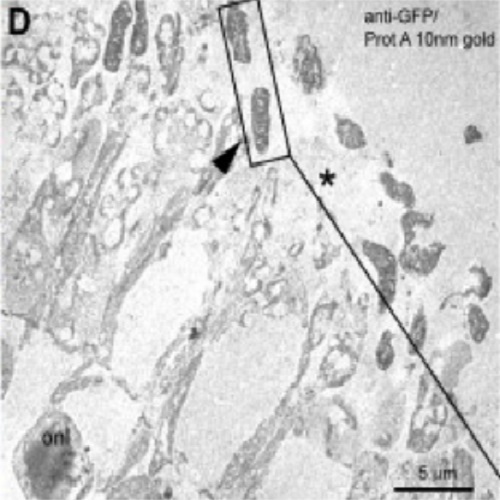Labeling of ultrathin resin sections for correlative light and electron microscopy.
Correlative microscopy combines the versatility of the light microscope with the excellent spatial resolution of the electron microscope. Here, we describe fast and simple methods for correlative immunofluorescence and immunogold labeling on the very same ultrathin section. The protocols are demonstrated on sections of tissue samples embedded in the methacrylate Lowicryl K4M. Ultrathin sections are mounted on electron microscopy (EM) grids and stained simultaneously with fluorescent and gold markers. For the detection of primary antibodies, we applied either protein A gold or immunoglobulin G (IgG) gold in combination with secondary antibodies coupled to Alexa488 or Alexa555. Alternatively, the correlative marker FluoroNanogold was used, followed by silver enhancement. The samples have to be analyzed first at the light microscope and then in the transmission electron microscope (TEM), because the fluorescence is bleached by the electron beam. Labeled structures selected at the fluorescence microscope can be identified in the TEM and analyzed at high resolution. This way, fluorescent signals can be directly correlated to the corresponding subcellular structures in the area of interest.

- Methods Cell Biol. 2012;111:75-93
- 2012
- Imaging Technologies Development
- 22857924
- PubMed
Enabled by:
